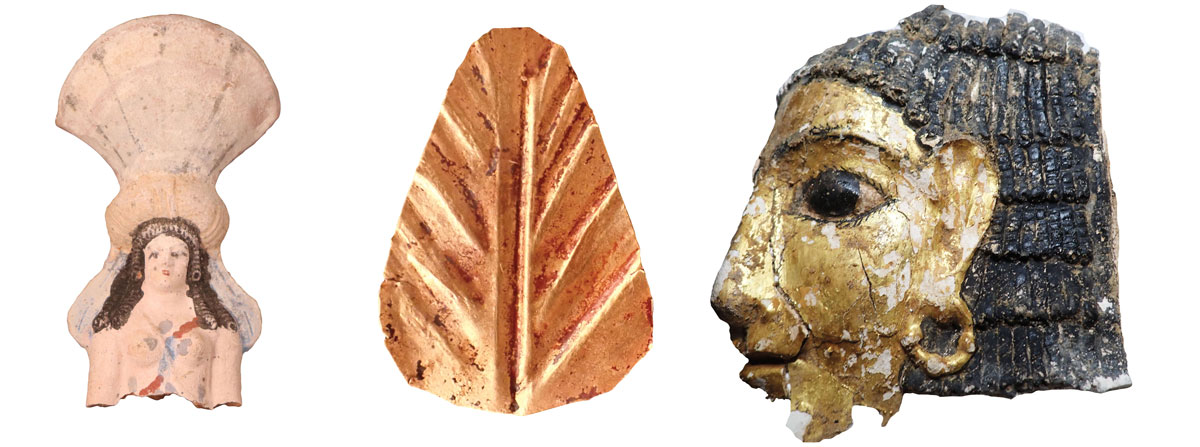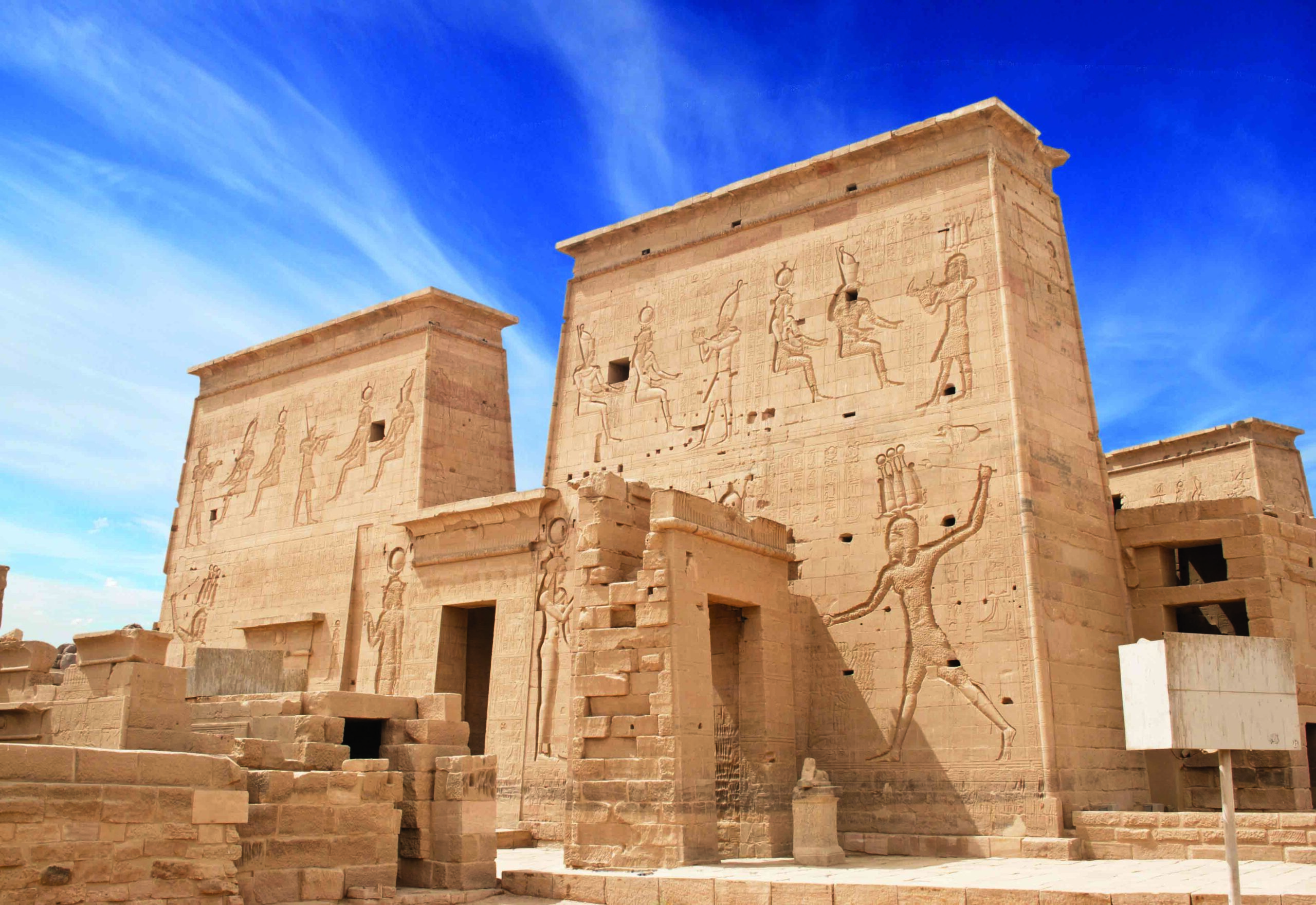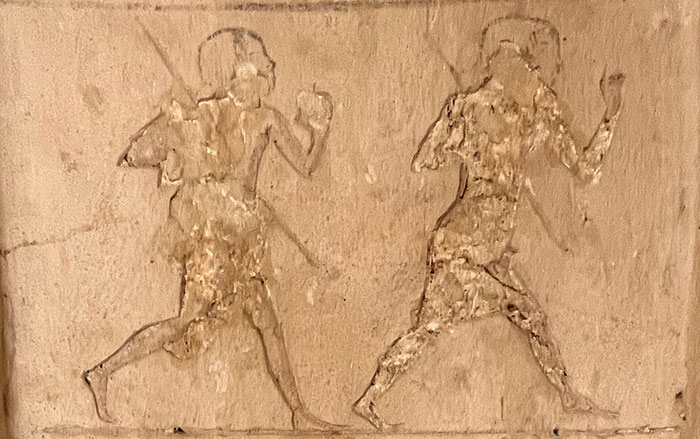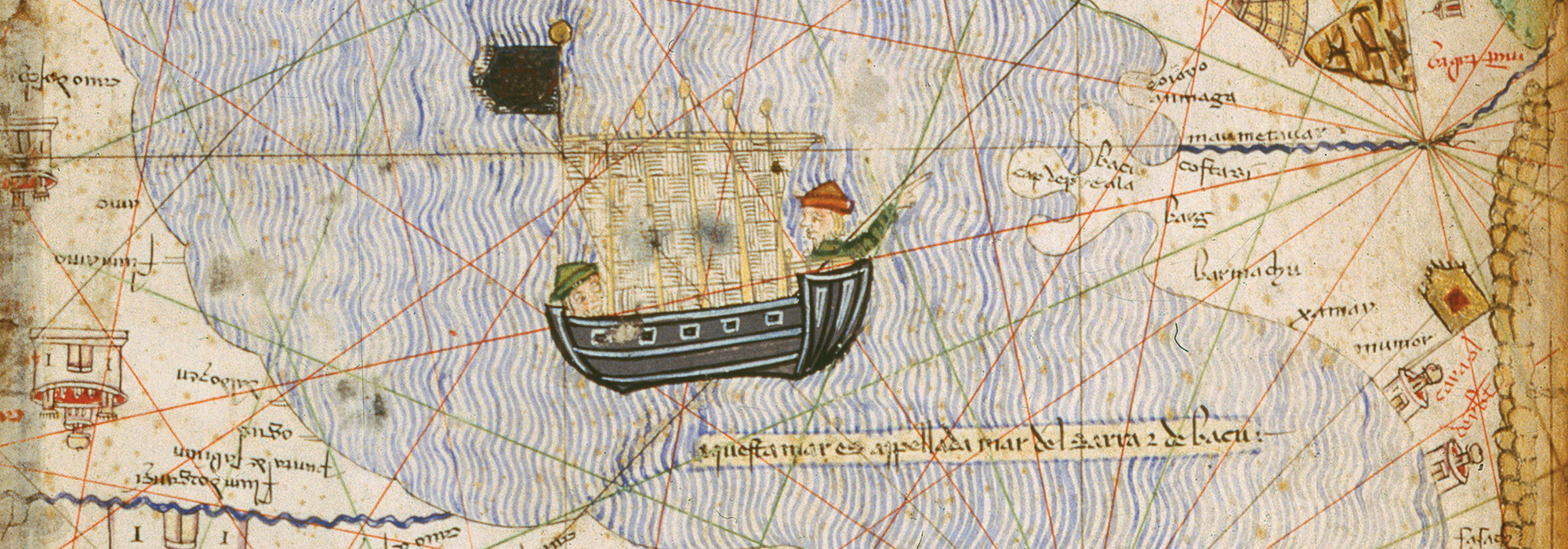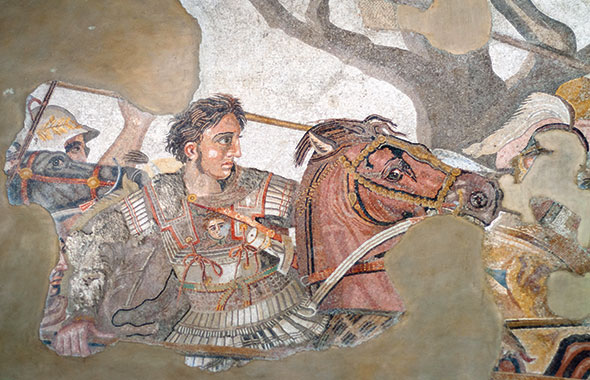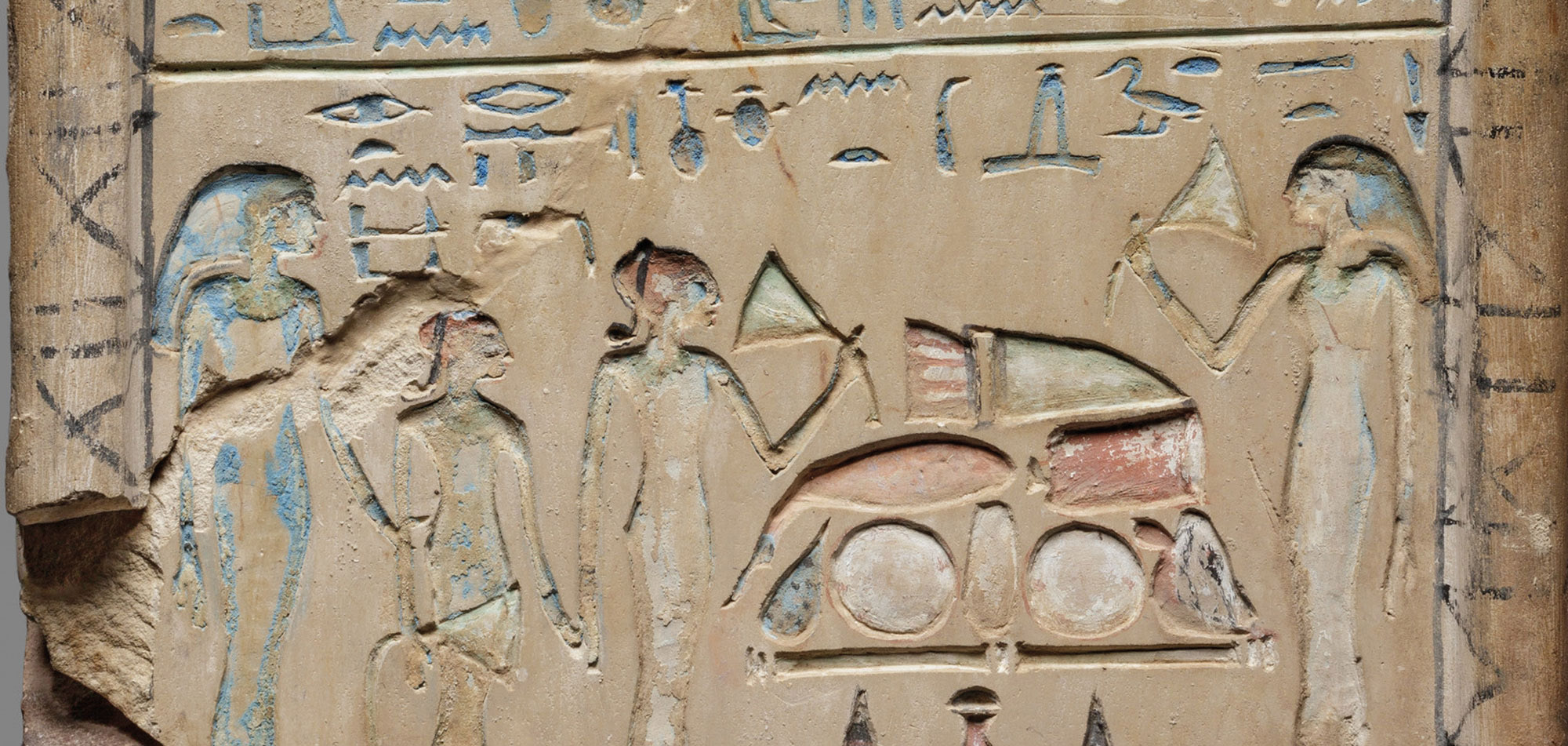
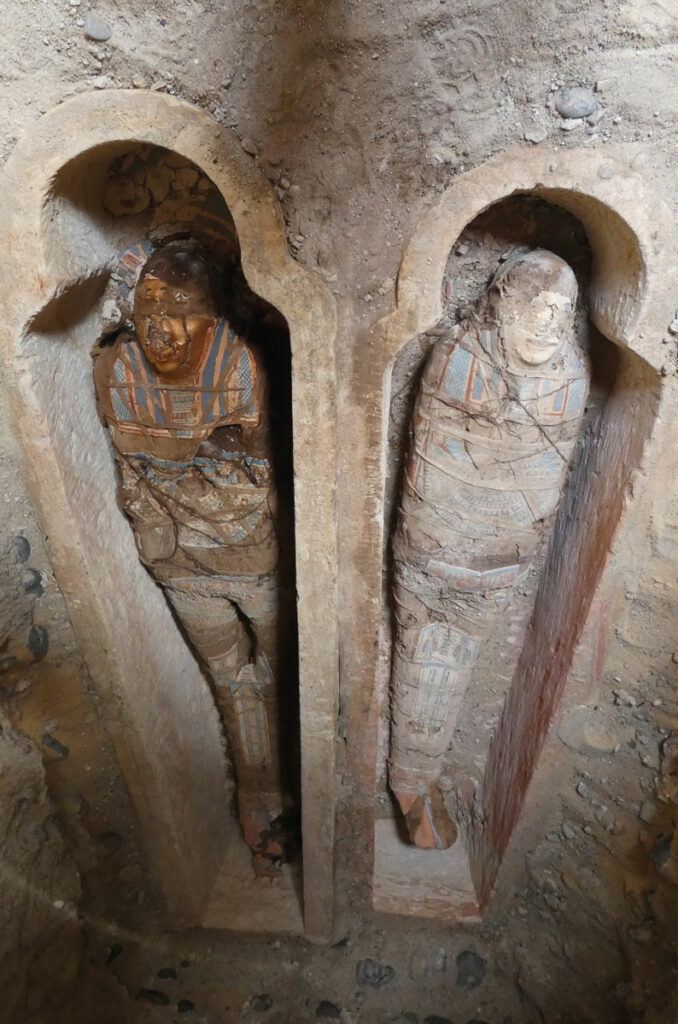
In the ancient city of Oxyrhynchus, just west of the Nile, a team led by archaeologists Esther Pons of Spain’s National Archaeological Museum and Maite Mascort of the University of Barcelona unearthed an underground tomb. It dates to between 332 and 30 B.C. or to the beginning of the subsequent Roman period, which continued until the seventh century A.D. In the chamber, they discovered two stone sarcophagi that contained the mummies of a man and a woman. Their bodies were encased in multicolored plaster-and-linen cartonnage, including a neckpiece decorated with the head of the Egyptian god Horus to protect the deceased. Multiple terracotta statuettes found on the tomb’s floor depict a foliage-crowned Isis-Aphrodite, a form of the Egyptian goddess Isis that incorporated the Greek deity Aphrodite’s association with fertility. “These figurines are very important because it’s the first time that they have appeared not only in Oxyrhynchus,” says Pons, “but also in this part of Egypt.”
In a necropolis just to the south, the researchers uncovered more than 20 mummies interred in Roman-era tombs, along with seals, a gold mask, and papyri with Greek magical texts. Two of the individuals had gold amulets shaped like tongues in their mouths. The Egyptians believed these objects would allow the deceased to speak in the afterlife.


